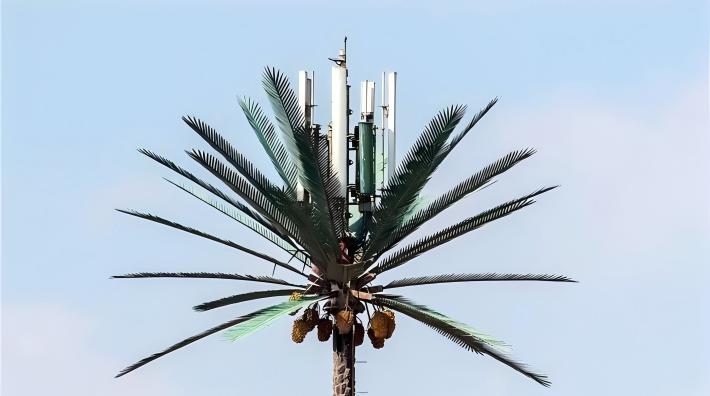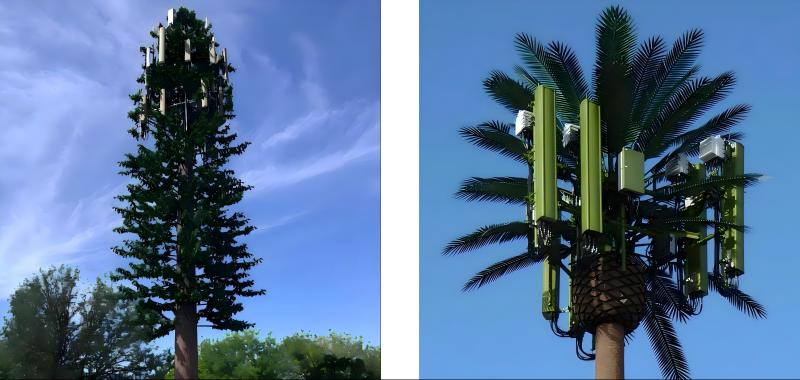Why Do Scenic Areas Only Allow Camouflage Tree Towers? The Hidden Rules of Aesthetics and Ecology
From the misty peaks of Huangshan to the sun-kissed resorts of Dubai, camouflage tree towers—disguised as pine trees, palm trees, or other native flora—have become the unspoken rule for telecom infrastructure in scenic zones. But why are traditional monopole or lattice towers banned in these areas? The answer lies at the intersection of cultural preservation, environmental politics, and the growing power of public opinion. Let’s unravel the reasons behind this global trend.

Governments and heritage organizations enforce strict visual guidelines to protect the integrity of natural and cultural landscapes:
UNESCO World Heritage Sites: Towers must “blend invisibly” with surroundings to avoid losing heritage status.
Example: In Italy’s Cinque Terre, faux-cypress towers replaced monopoles after UNESCO threatened to revoke its designation.
National Park Policies: The U.S. National Park Service mandates towers to mimic local trees, citing the 1916 Organic Act’s “unimpaired conservation” principle.
Tourism Economics: A single “eyesore” tower can deter visitors. A 2022 study found that camouflaged towers in New Zealand’s Fiordland boosted tourist satisfaction by 34%.
Scenic areas prioritize “untouched” beauty, making traditional towers politically toxic:
Public Backlash: In 2023, a proposed monopole near Canada’s Banff National Park sparked 10,000+ petitions. The project was scrapped in favor of pine-disguised towers.
Architectural Harmony: Camouflage towers adapt to regional styles:
Alpine zones: Cedar or pine designs.
Desert resorts: Palm or saguaro cactus replicas.
Tropical beaches: Coconut tree-inspired structures.
While camouflage towers aren’t inherently eco-friendly, they align with conservation narratives:
Wildlife Protection: In Kenya’s Maasai Mara, giraffe-shaped towers reduced bird collisions by 60% compared to standard monopoles.
Low-Key Footprints: Smaller bases minimize soil disruption in fragile ecosystems like wetlands.
Carbon Neutrality Claims: Some operators pair camouflage towers with solar panels (hidden as “leaves”) to market “green networks.”
Rejecting camouflage designs can backfire:
Permit Denials: In France’s Provence, telecom giant Orange faced 18-month delays by insisting on monopoles.
Fines: Costa Rica fines operators $50,000 per “visually disruptive” tower in protected zones.
Reputation Damage: A viral photo of a monopole “ruining” Iceland’s Skógafoss waterfall cost a telecom brand 12% in customer trust.

China’s Huangshan (Yellow Mountain), a UNESCO Global Geopark, offers a blueprint:
Challenge: Rolling out 5G without harming its iconic granite peaks and ancient pine vistas.
Solution: 120+ towers disguised as Huangshan pines, complete with artificial bark and needle-like antennas.
Results:
5G coverage achieved with zero tourist complaints.
Maintenance costs rose by 40%, but provincial subsidies covered 60% of expenses.
Skeptics argue that camouflage towers prioritize optics over functionality:
Signal Obstruction: Dense faux foliage can weaken coverage by 15–20%, per a 2023 MIT study.
Cost Hypocrisy: Taxpayers often foot the bill. Norway’s $420,000-per-tower “fir tree” project drew ire for misusing conservation funds.
Material Waste: Most artificial trees use non-recyclable fiberglass and PVC, contradicting sustainability claims.
Emerging innovations aim to resolve trade-offs:
Bio-Camouflage: Living trees with embedded micro-antennas (pioneered in Singapore).
Holographic Towers: Projection-based “invisible” towers tested in Japan.
AI-Optimized Designs: Algorithms balance aesthetics and signal strength, slashing coverage loss to 5%.
Scenic areas mandate camouflage tree towers not because they’re perfect, but because they’re the least bad option in a world demanding both connectivity and untouched beauty. While costs and technical compromises remain, the alternative—angry tourists, legal battles, and ecological shame—is far worse.
As one park ranger in Yosemite put it: “Visitors don’t come here to see bars on their phones. They come to see nature. Our job is to make sure they don’t notice the difference.”
Learn more at www.alttower.com